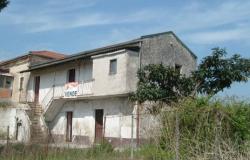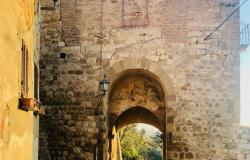Words by Carla Passino
Looking at the buildings, you just wouldn't guess. Milan is a mishmash of graceful Romanesque churches, grand, somewhat stodgy 19th century palazzos and elegant Art Nouveau villas. It has no soaring glass and metal towers or futuristic skyscrapers to lend it a contemporary edge. With the exception of the swanky, newly built Nuova Sede della Regione Lombardia tower, designed by Pei Cobb Freed & partners, the city's few high rises, such as the 1950s Grattacielo Pirelli and Torre Velasca, look positively vintage.
Nonetheless, this is one of the world's four fashion capitals—someone among the most conservative of the fashionistas, would even claim it's one of the world's two fashion capitals, together with Paris.
And make no mistake—historic architecture may make Milan look like a genteel lady preserved in Austro-Hungarian aspic, but the city oozes fashion from every corner.
Just take the unabashed, unrepentant, obvious luxury of the Quadrilatero della Moda, that network of streets bordered by via Montenapoleone, via Manzoni, via della Spiga and Corso Venezia, where daring skirts, shimmering shirts, and dresses with jewellery-high price tags, shine in glamorous shop windows that fly in the face of the neighbourhood's understated, low-key elegance.
 Achingly stylish Via Montenapoleone has been the obvious starting point of any fashionable tour of Milan since the 1980s, when it was the backdrop for the supermodel culture—as well as the setting for the eponymous Italian film, starring then divas Carol Alt and Renee Simonsen, which celebrated them.
Achingly stylish Via Montenapoleone has been the obvious starting point of any fashionable tour of Milan since the 1980s, when it was the backdrop for the supermodel culture—as well as the setting for the eponymous Italian film, starring then divas Carol Alt and Renee Simonsen, which celebrated them.
The street reads like the who's who in world couture, a dazzling sequence of flowing lines and lavish fabrics that changes dramatically at every season, as new colours and looks fill the shop windows.
It is the flagship home of Valentino's trademark red dresses (at number 20), Versace's shockingly sexy looks (at number 11) and Sergio Rossi head-spinningly high heels (at number 6). But it also has room for the reassuringly solid designs of Tanino Crisci, a quintessentially Italian shoemaker (at number 3), Alviero Martini's map motifs (at number 26), and Buccellati's exquisite jewellery (at number 23). Of course there is no shortage of big designers from abroad—Dior (at number 12), Yves Saint Laurent (at number 27) and Ralph Lauren (at number 4), among others.
 Two English boutiques cluster together at the corner with via Verri—Alexander McQueen (via Verri 8) and Burberry (via Bigli 2) make an unlikely pairing of cutting edge style and British tradition.
Two English boutiques cluster together at the corner with via Verri—Alexander McQueen (via Verri 8) and Burberry (via Bigli 2) make an unlikely pairing of cutting edge style and British tradition.
Just opposite the McQueen shop, via Sant'Andrea is perhaps the most genuinely elegant of the quadrilatero streets. Bastions of international womenswear like Armani (at number 9), Chanel (at number 10) and Gianfranco Ferre (at number 18) take up the ground floors of grandiose 18th century palazzos and graceful 19th century mansions.
But the one shop that steals the eye is Moschino, whose window displays (at number 12) are as eccentric as they are innovative - think a group of giant ants carrying away Moschino's clothes and bags; a set of Moschino clad dummies enacting a scene from A Midsummer Night's Dream; or a gigantic clock where different pieces of clothing mark the hours.
Moschino has an equally creative shop in via della Spiga, where it vies for attention with Roberto Cavalli's daring, screaming prints (at number 42), Dolce & Gabbana's boudoir creations (at number 26), and Sermoneta's exquisite, elegant and ultra-expensive gloves (at number 46).
 The real gem of the quadrilatero, though, is one of the smallest side streets, Via Gesu. Granted, it is surprisingly devoid of boutiques. But it is here, at a 15th century convent now turned into the Four Seasons Hotel ( number 6/8), that the rich and fashionable rest their weary bodies after a hard day's shopping on their jaw-dropping, feet-killing heels.
The real gem of the quadrilatero, though, is one of the smallest side streets, Via Gesu. Granted, it is surprisingly devoid of boutiques. But it is here, at a 15th century convent now turned into the Four Seasons Hotel ( number 6/8), that the rich and fashionable rest their weary bodies after a hard day's shopping on their jaw-dropping, feet-killing heels.
And more importantly, it is here that you can take a sneak peek into the life of the people that made Milan the great city it is today—the Casa Museo Bagatti Valsecchi is a slice of 19th century Milanese beau monde which has stayed frozen in time (at number 5).
But if the quadrilatero sets the pulse of fashion, it's in the smaller shops outside it that real Italian style comes alive, for men and women alike. Milan's bon chic bon genre ladies shop as often in Corso Magenta as they do in Via Montenapoleone - if not more.
Many of the corso’s boutiques flourish in that stretch of road set on either side of the grand Baroque facade of Palazzo Litta, where Spanish princes Margaret Therese, Empress Marie-Therese of Austria and Napoleon danced the nights away in centuries gone by.
 These are classically elegant shops that pay only a nodding homage to trend - Fratelli Rossetti has classy shoes that are also remarkably comfortable (at number 17), Pellini has original jewellery in limited editions (at number 11) and Bardelli has the kind of understated, sartorial clothes in rich fabrics that are so quintessentially Italian (with a great selection for both men and women, at number 13). And between one shop and the next are ancient cafés that are part of Milan's history—the Art Nouveau Bar Magenta has been presiding the corner with Via Carducci since 1911, and Pasticceria Marchesi, allegedly one of Giorgio Armani's favourite haunts, has been concocting delicious cakes since 1824 (in via Santa Maria della Porta 11/A).
These are classically elegant shops that pay only a nodding homage to trend - Fratelli Rossetti has classy shoes that are also remarkably comfortable (at number 17), Pellini has original jewellery in limited editions (at number 11) and Bardelli has the kind of understated, sartorial clothes in rich fabrics that are so quintessentially Italian (with a great selection for both men and women, at number 13). And between one shop and the next are ancient cafés that are part of Milan's history—the Art Nouveau Bar Magenta has been presiding the corner with Via Carducci since 1911, and Pasticceria Marchesi, allegedly one of Giorgio Armani's favourite haunts, has been concocting delicious cakes since 1824 (in via Santa Maria della Porta 11/A).
A similar mix of classy shops and old cafés makes up Corso Genova, a short walk south of Corso Magenta, past the hauntingly beautiful Romanesque silhouette of Sant'Ambrogio.
It's hard to say what's more attractive about Corso Genova—the happy blend of trend and tradition at Trevisan (at number 20) and Biffi (at number 6), the solid, affordable daywear at MaxMara (at number 14)...or the crispy, mouthmelting pastries filled with raspberry jam at Pasticceria Cucchi (at number 1).
 At the opposite end of the fashion scale are the edgy, quirky shops that cater for die-hard fashionistas. The most famous of them all is 10 Corso Como, the art gallery, café, hotel and self-proclaimed concept store launched in 1990 by photographer Carla Sozzani.
At the opposite end of the fashion scale are the edgy, quirky shops that cater for die-hard fashionistas. The most famous of them all is 10 Corso Como, the art gallery, café, hotel and self-proclaimed concept store launched in 1990 by photographer Carla Sozzani.
Corso Como’s choice of wares, which spans clothes but also design and music, is certainly conceptual, and so much at the cutting edge that sometimes you feel it's bleeding.
No matter how avantgarde these shops are, though, Milanese trend hunters head elsewhere to spot fashion in the making—the bar-lined streets of the Navigli and Brera, where shops open at night, soothsayers will read your hand by lamplight, and aperitifs and after dinner cocktails are served non stop from 7pm to the early hours of the morning.
Both neighbourhoods are a favourite haunt of the city's young and beautiful. There are the models, tall, paper thin and clad in surprisingly low-key pieces, sashaying into bustling osterie where they stare blankly at the menu before settling on a plateful of mixed leaves; the art students of the Accademia delle Belle Arti, with their creative, colourful, outrageously bohemian approach to clothing and hairstyle; and the mixed crowds of professionals and university students who interpret Italy's sartorial classics in casual, relaxed, effortless style. Here, more than anywhere else, Milan’s fashion truly comes alive.
Where to stay fashionably
 The Four Seasons Hotel, 6/8 via del Gesu, (visit website), one of Milan’s best hotels, set in an ancient convent in the heart of the quadrilatero.
The Four Seasons Hotel, 6/8 via del Gesu, (visit website), one of Milan’s best hotels, set in an ancient convent in the heart of the quadrilatero.
3Rooms, 10 Corso Como, +39 02 62 61 63, (visit website), part of the 10 Corso Como fashion empire, it only has three bedrooms.
Where to eat and drink fashionably
 Nobu, Via Pisoni 1, +39 02 7231 8645, (visit website), the Milanese version of the celebrated Japanese chain.
Nobu, Via Pisoni 1, +39 02 7231 8645, (visit website), the Milanese version of the celebrated Japanese chain.
Bice, Via Borgospesso 12, +39 02 7600 2572, (visit website), a traditional restaurant where solid Tuscan origin blend with gastronomic innovation.
Just Cavalli Café, Viale al Parco Luigi Camoens, +39 02 311 817 (visit website), set in Gio Ponti’s Torre Branca, Roberto Cavalli’s restaurant and wine bar is a cradle of fashion and design (note the bar designed by Ron Arad).
10 Corso Como Café, 10 Corso Como, +39 02 2900 2674 , (visit website), a stylish café cum restaurant in the place where you can buy all things fashionable.













